What's New
Displaying results 3751 - 3760 of 4052
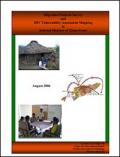
Resource | Publications,
Around the world, research and experience have shown that migration and mobility increases vulnerability to engaging in HIV-risk behaviour. In the case of Timor-Leste, mobility is particularly relevant due to massive population movements in recent years associated with the post-referendum conflict. During the violence of 1999, it is estimated that approximately 250,000 people, or one quarter of the population, fled to neighbouring West Timor. Since the cessation of violence, nearly 200,000 Timorese have returned to their villages and communities. However, endemic poverty and lack of opportunities in rural areas continue to contribute to rural-urban migration movement and mobility.
The overall aim of this study was to provide baseline data on mobility patterns, HIV/AIDS awareness and vulnerability in Timor-Leste and comprised of two parts - the Migration Patterns Survey and Vulnerability Assessment Mapping.
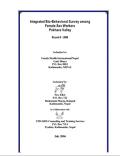
Resource | Publications,
This study is the second round of the integrated bio-behavioral survey (IBBS) conducted among 200 female sex workers (FSWs), both street and establishment based, in Pokhara. The IBBS was carried out during the months of January and February 2006. The survey measured HIV and syphilis prevalence among FSWs and variables which are associated with risk of HIV infection, such as condom use, sexual behaviors, knowledge of HIV/AIDS, reported cases of sexually transmitted infections (STI), STI treatment behaviors, exposure to HIV/AIDS messages and drug habits. This survey was also undertaken to compare the findings for condom use and sexual behavior of FSWs in Pokhara from this study with findings from the 2004 study.
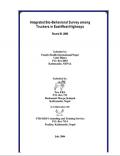
Resource | Publications,
This study is the third round of the integrated bio-behavioral survey (IBBS) conducted among truckers in Pathlaiya, Bara district. The IBBS was carried out during the months of January and March 2006. The survey measured HIV and syphilis prevalence among truckers and variables which are associated with risk of HIV infection, such as condom use, sexual behaviors, knowledge of HIV/AIDS, reported cases of sexually transmitted infections (STI), STI treatment behaviors, exposure to HIV/AIDS messages and drug habits.
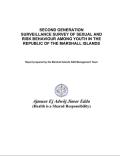
Resource | Publications,
Second Generation Surveillance (SGS) aims to develop and enhance existing surveillance system for sexually transmitted infections (STIs), HIV/AIDS and behavioral surveillance systems. The outcome should be high-quality epidemiological data to support the design and evaluation of interventions. The implementation of specific HIV programs such as the Second Generation Surveillance survey of risk behaviors, targeting all unmarried youths on each atoll is an initiative that can contribute to address issues related to sexual health for the young people of the Marshall Islands.
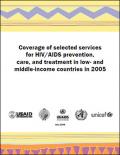
Resource | Publications,
The Declaration of Commitment on HIV/AIDS adopted by the United Nations General Assembly Special
Session on HIV/AIDS in June 2001 commits member states and the global community to taking strong and immediate action to address the HIV/AIDS crisis. It calls for achieving a number of specific goals, including reducing HIV prevalence among young men and women, expanding care and support, and protecting human rights. The Millennium Development Goals adopted at the Millennium Summit in September 2000 call for expanded efforts to halt and reverse the spread of HIV by 2015.
Progress toward achieving these goals requires significantly expanding HIV/AIDS programs to foster a supportive environment, to prevent new infections, to care for those already infected, and to mitigate the social and economic consequences of the epidemic. One measure of progress is the percentage of people living in low- and middle-income countries who have access to key prevention, treatment, care, and support services. This report presents the results of an assessment of the coverage of several key services for the prevention and treatment of HIV/AIDS in 2005.
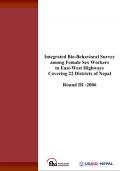
Resource | Publications,
This study is the third round of the Integrated Bio-Behavioral Survey (IBBS) conducted among 600 female sex workers (FSWs), from 22 districts of Terai Highway. Among them, 400 respondents were recruited from four study sites representing 16 districts between Jhapa in the east and Rupandehi in the west along the highway in the Terai, and 200 were recruited from three sites representing six districts between Kapilvastu in the west to Kanchanpur in the far western region. The IBBS was carried out during the months of March- June 2006. The survey measured HIV and STIs prevalence among FSWs and variables which are associated with a risk of HIV infection, such as condom use, sexual behaviors, knowledge of HIV/AIDS, reported cases of sexually transmitted infections (STI), STI treatment behaviors, exposure to HIV/AIDS messages and drug habits.
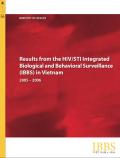
Resource | Publications,
From October 2005 to June 2006, integrated HIV biologic and behavioral surveillance (IBBS) was conducted among selected population groups in Hanoi, Quang Ninh, Hai Phong, Da Nang, Ho Chi Minh City (HCMC), An Giang, and Can Tho. The IBBS utilized community-based sampling to estimate the prevalence of HIV and other sexually transmitted infections (STI) and to provide indicators of risk behaviors and intervention exposure among most-at-risk population groups. These included female sex workers (FSWs), injecting drug users (IDUs) and men who have sex with men (MSM).
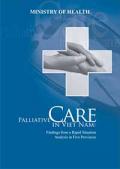
Resource | Publications,
In Việt Nam, 263,000 people are estimated to be living with HIV/AIDS and approximately 150,000 people are diagnosed with cancer each year. It is well documented that pain and suffering are prevalent among people with these and other life-limiting illnesses. While international research shows that from 60 to 80% of people with HIV/AIDS and cancer will experience distressing symptoms including pain particularly in the last stages of life, very little is known regarding palliative care needs in Viet Nam.
To better appreciate and respond to the full spectrum of palliative care needs in Việt Nam, the Therapy Department of the Ministry of Health in cooperation with international partners, FHI, Policy Project, VCHAP, USAID and USCDC through the US Government President’s Emergency Plan for AIDS Relief, conducted in summer 2005 a rapid situation analysis (RSA) in five high HIV and cancer prevalence provinces in Việt Nam: Hanoi, Hai Phong, Quang Ninh, HCMC and An Giang.
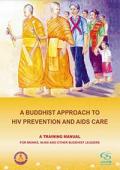
Resource | Tools,
In many countries of East Asia and the Pacific the ‘heart of the community’ is the place of worship, be it a mosque, temple, church or other sacred site. This is certainly true of Buddhist communities in Cambodia, Lao PDR, Mongolia, Myanmar, Thailand, Viet Nam and of Yunnan, the southernmost province of China. It is equally true that in the countries most affected by HIV and AIDS to date, religious leaders have taken a leading role in providing services to those affected, in caring for the ill, for those orphaned and widowed and in reducing community stigma and discrimination.
This manual has been designed to help facilitators to conduct workshops with Buddhist monks, nuns, novices, lay teachers and other leaders on the issues of HIV and AIDS. The workshop sessions apply Buddhist teachings to understand the suffering and challenges of communities facing the crisis of HIV and AIDS. It is based on the experience of working with and training Buddhist leaders in countries throughout South and South-East Asia.
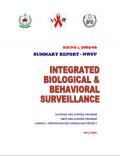
Resource | Publications,
The findings presented here are part of the round one surveillance activities carried out in eight cities of Pakistan by the National AIDS Control Program through its HIV/AIDS Surveillance Project. The basic goal of this research is to estimate and map the various HIV high-risk groups in Pakistan, including Intravenous Drug Users and Commercial sex workers (female sex workers, male sex workers & eunuch sex workers); estimate the prevalence of HIV infection and collect behavioral data for monitoring of the epidemic and its associated factors in the country.





